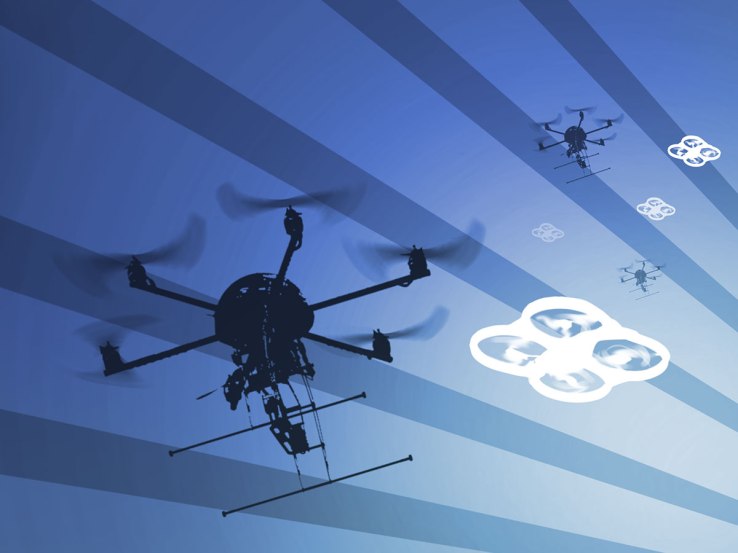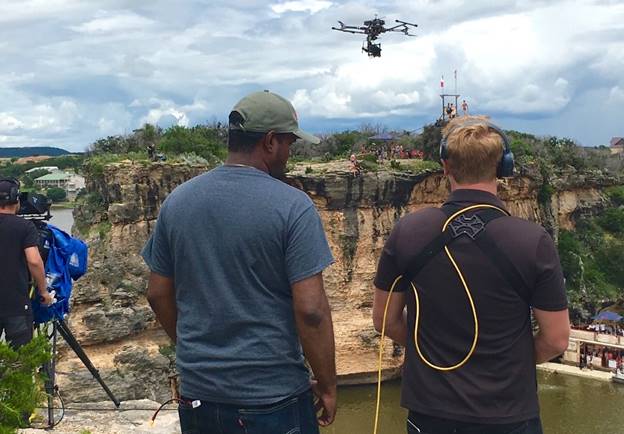 There are new regulations that will lower the barriers to entry for the commercial operation of drones — and it’s about time. The challenge for the Federal Aviation Administration (FAA) has been to establish a framework of rules to regulate how small unmanned aircraft systems (small UAS, or drones) can be used safely in the U.S. air space without undermining the growth of innovative drone-based technology solutions.
There are new regulations that will lower the barriers to entry for the commercial operation of drones — and it’s about time. The challenge for the Federal Aviation Administration (FAA) has been to establish a framework of rules to regulate how small unmanned aircraft systems (small UAS, or drones) can be used safely in the U.S. air space without undermining the growth of innovative drone-based technology solutions.The FAA has finally released its new rules (Operation and Certification of Small Unmanned Aircraft Systems), which will be added as a new section (Part 107) to the Federal Aviation Regulations (FAR) to allow for safe commercial operations of drones. The view from the industry is that the FAA’s final rules will successfully fuel the proliferation of drone technology for non-recreational applications. This brings enormous excitement to those commercial markets that may be disrupted because of the benefits of drone operations.
New drone technology and steadily decreasing price points have precipitated the explosive growth of drones in hobbyist markets. Hobbyists can use small UAS so long as their operations are strictly for hobby or recreational purposes, they stay five miles from an airport, stay lower than 400 feet above ground level and are within the visual line of sight of the operator. (Hobbyists should check the FAA rules themselves here.) As of December 2015, the FAA mandated that all owners of small UAS weighing between 0.55 and 55 pounds must register online.
The explosive growth of recreational drones incited demand from businesses seeking to leverage the benefits of drones in their commercial endeavors. Camera crews (such as the Aerobo team of drone operators shown on a live sports event set below) seek to leverage the view from drone cameras for filming a variety of live broadcasts, movies and TV films.

Realtors seek to use drones to take aerial estate photos for their customers and prospects. Crop management companies want to use them to survey their large fields. Emergency responders want support for their rescue operations. Advances into these commercial uses have been limited by regulations on the use of airspace and privacy concerns.
An interim policy based on approved exemptions
Realizing there would be a delay in establishing a final rule for commercial use of drones, in early 2015 the FAA released an interim policy for commercial UAS operators that was a significant improvement over the previous process that required every commercial UAS operation to be individually evaluated. The interim policy (associated with Section 333 of the FAA Modernization and Reform Act of 2012) permitted businesses to apply for an exemption that allowed them to fly small UAS for specific non-recreational low-risk operations under certain defined parameters without the previous level of government oversight.The FAA’s final regulations for small UAS commercial drone operations are expected to level the playing field for drone-based businesses and assure solid competition.
The most significant restriction was the requirement that the drone operator needed to have an FAA-issued pilot’s license (for a manned aircraft). Many businesses stalled as a result, reluctant to engage a licensed pilot in their budget-restricted businesses. It is likely that the pilot requirement was a factor in the blossoming of service organizations such as DataWing (shown in the photo below preparing to conduct an aerial mission to perform air sampling and thermal inspection at a landfill).

Other national drone operator service organizations such as DroneBase and Droners.io expanded their networks, while Skyward powers its global drone network with software and support for commercial drone operators.
Part 107: The new rule for commercial operation of drones
The FAA’s rules for operation and certification for small UAS (summarized here) will go into effect August 29, 2016, establishing routine civil operations and safety. The view from the industry is that the FAA’s final rules will successfully fuel the growth of drone technology for non-recreational applications. This brings enormous excitement to those commercial markets that may be disrupted because of the benefits of drone operations.The significant change for businesses is that the new Part 107 rule removes the pilot’s license requirement (a requirement with interim policy exemptions) and replaces it with a certification received by taking an in-person, written, drone-specific aeronautical knowledge test designed to ensure that the drone operator knows how to fly safely. Drone operators must also be vetted by TSA, be at least 16 years old, be able to communicate in English and have no physical or mental conditions that interfere with safe flight practices.
The Part 107 rule also establishes requirements for flying a UAS commercially, including:
- flying below 400 feet above ground (higher if the drone remains within 400 feet of a structure)
- flying only during daylight or civil twilight within visual line-of-sight (VLOS)
- flying less than 100 miles per hour
Because the FAA does not regulate how UAS gather data on people or property, the new rule does not address privacy issues. Nevertheless, the FAA intends to include privacy education during the UAS registration process. They have strongly encouraged all UAS pilots to check local and state laws before gathering information through remote sensing technology or photography.
Waivers for special applications
In consideration of the fact that small UAS technology is fast changing, with ever-improving performance, innovative technology and new features, a key provision of the Part 107 rule is a waiver mechanism that allows a drone operator to deviate from certain operational restrictions if they set forth sufficient evidence to the FAA that the proposed operation can be performed safely. The waivable portions of Part 107 include:- operations from a moving vehicle
- non-daylight operations
- beyond visual line-of-sight operation
- operations over non-participating people
- operation in certain airspace
0 Response to "New rules fuel the growth of the commercial drone industry"
Post a Comment